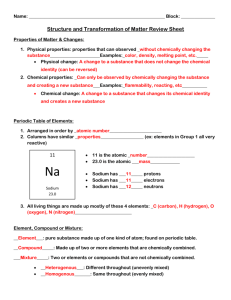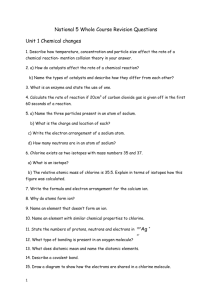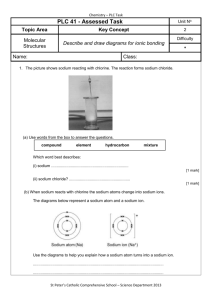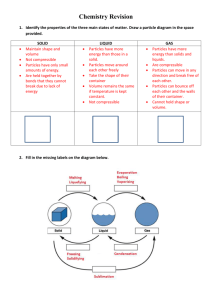Transpiration DBQ
advertisement
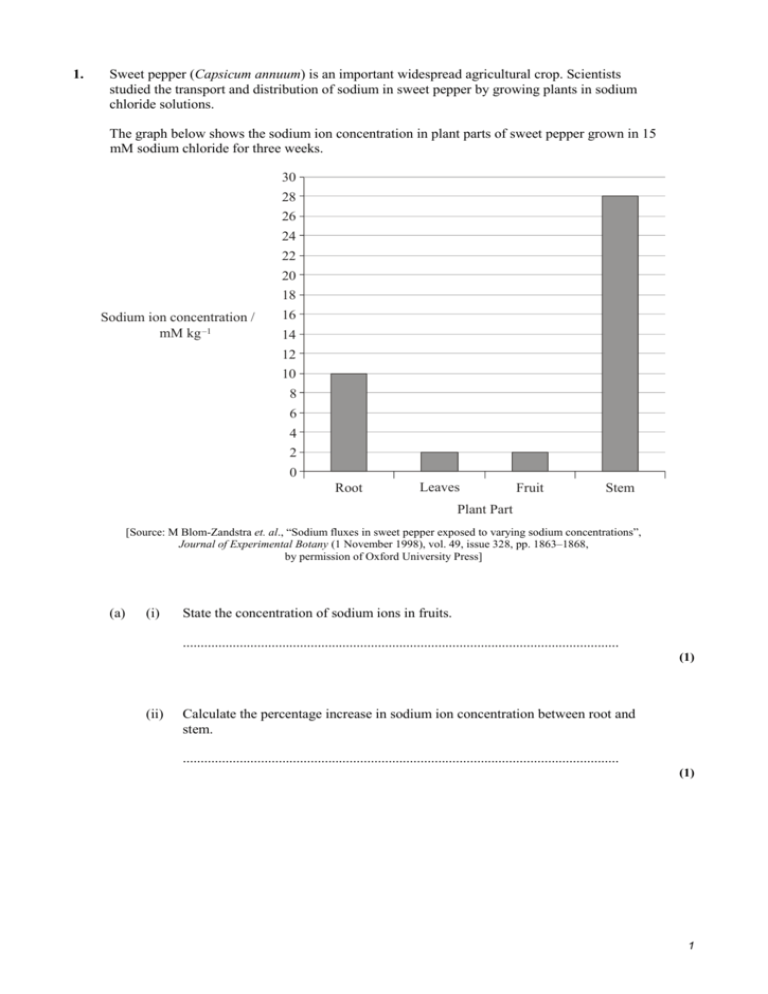
1. Sweet pepper (Capsicum annuum) is an important widespread agricultural crop. Scientists studied the transport and distribution of sodium in sweet pepper by growing plants in sodium chloride solutions. The graph below shows the sodium ion concentration in plant parts of sweet pepper grown in 15 mM sodium chloride for three weeks. 30 28 26 24 22 20 18 Sodium ion concentration / mM kg –1 16 14 12 10 8 6 4 2 0 Root Leaves Fruit Stem Plant Part [Source: M Blom-Zandstra et. al., “Sodium fluxes in sweet pepper exposed to varying sodium concentrations”, Journal of Experimental Botany (1 November 1998), vol. 49, issue 328, pp. 1863–1868, by permission of Oxford University Press] (a) (i) State the concentration of sodium ions in fruits. ........................................................................................................................... (1) (ii) Calculate the percentage increase in sodium ion concentration between root and stem. ........................................................................................................................... (1) 1 (b) Suggest why a high sodium ion concentration in the cells of the stem is important in providing support to this type of plant. .................................................................................................................................... .................................................................................................................................... .................................................................................................................................... (1) (c) State one possible use of sodium in plants. .................................................................................................................................... (1) (d) Scientists also found that the concentrations of sodium ion in cells of the stem and in xylem sap were the same. Explain why this led the scientists to believe there was no active transport between xylem and stem. .................................................................................................................................... .................................................................................................................................... .................................................................................................................................... .................................................................................................................................... (2) (e) Suggest one possible method of transport of sodium ions between xylem and stem. .................................................................................................................................... (1) 2 The graph below shows the sodium ion concentration of the xylem sap in relation to the distance from the base. Two experiments were performed. Experiment 1: plants grown in 15 mM sodium chloride solution only Experiment 2: plants grown in 15 mM sodium chloride solution and then transferred to a sodium-free solution for an extra week Key: Sodium ion concentration / mM 18 16 14 12 10 8 6 4 2 0 40 60 80 experiment 1 100 experiment 2 120 140 Distance from base / arbitrary units [Source: M Blom-Zandstra et. al., “Sodium fluxes in sweet pepper exposed to varying sodium concentrations”, Journal of Experimental Botany (1 November 1998), vol. 49, issue 328, pp. 1863–1868, by permission of Oxford University Press] (f) State the relationship between sodium ion concentration and distance from the base of the stem in experiment 1. .................................................................................................................................... (1) (g) (i) State the sodium concentration when the stem is 50 arbitrary units from the base in plants for each of the following. Experiment 1: ................................................................................................. Experiment 2: ................................................................................................. (1) 3 (ii) Explain the difference in the sodium ion concentration in this part of the stem in plants of experiment 1 and experiment 2. ........................................................................................................................... ........................................................................................................................... ........................................................................................................................... ........................................................................................................................... (2) (h) Compare the distribution of sodium ions in the stems of plants in both experiments. .................................................................................................................................... .................................................................................................................................... .................................................................................................................................... .................................................................................................................................... .................................................................................................................................... (3) Water transported in xylem is transpired through stomata in leaves. The electron micrograph shows one stoma of the lower epidermis of the leaf of a Simon bamboo (Arundinaria simonii). Its magnification is 3000. [Source: Courtesy of Professor Zulma E Rúgolo, Instituto Darwinion, Buenos Aires, Argentina] (i) (i) Draw a line showing the maximum length of the stomatal pore. (1) 4 (ii) Calculate the real size of the stomatal pore. Show your working. ........................................................................................................................... (1) (j) Explain two abiotic factors that affect transpiration rate in this leaf. .................................................................................................................................... .................................................................................................................................... .................................................................................................................................... .................................................................................................................................... .................................................................................................................................... (2) (Total 18 marks) 5



